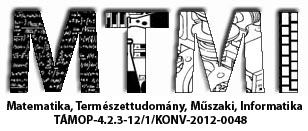Statistical analysis of meteorological factors that may influence the incidence of odontogenic infections
Abstract data
Based on previous empirical observation of the Oral Maxillofacial Surgery (OMS) department of UDMHSC medical staff, higher incidence of odontogenic infections were associated with sudden changes in the meteorological conditions.
Our aim of investigation was to prove possible correlations between meteorological parameters and the incidence of odontogenic infections using two sample and multivariate statistical analysis.
Material and Methods
We have analyzed the medical data records of the OMS of UDMHSC and meteorological parameters (dew point, minimum, maximum, and average temperature) provided by the Hungarian Meteorological Service between year 2008-2010.
Statistical analyses, like t-test and the Mann-Whitney non-parametric test, were used for two sample analyses. Cluster and discriminant analysis were used for multivariate statistics.
Results
We registered 1,096 patients with odontogenic infections, 1,050 (96%) were mild form of abscess treated as outpatient and 46 (4%) were inpatient treated. The male/female ratio was 17:8. Most of the patients (27%) were 20-30 years old.
Based on the incidence of odontogenic infections recorded on each day, two groups of study were created: a group with high incidence (6 or above cases/ day) and a group with low incidence (0 cases/day).
Significant differences between the two groups were not found using one of the meteorological parameters recorded on the day of diagnosis using t-test or Mann-Whitney test. Same analyses were performed for each day, starting from the possible onset until the day of diagnosis. However, significant differences were not found between the two groups.
Furthermore, we used multivariate analyses to discriminate between the two groups using, as descriptors, each meteorological parameter from the onset day until the diagnosis of odontogenic infection. Discriminant analysis classified the two groups into 83% and ~75% correctly, based on average-, maximum temperature and pertaining to dew point, minimum temperature, respectively.
We used multivariate analysis to identify those meteorological events which might influence the incidence of odontogenic abscesses from the onset time until the diagnosis.
Támogatók: Támogatók: Az NTP-TDK-14-0007 számú, A Debreceni Egyetem ÁOK TDK tevékenység népszerűsítése helyi konferencia keretében, az NTP-TDK-14-0006 számú, A Debreceni Egyetem Népegészségügyi Karán folyó Tudományos Diákköri kutatások támogatása, NTP-HHTDK-15-0011-es A Debreceni Egyetem ÁOK TDK tevékenység népszerűsítése 2016. évi helyi konferencia keretében, valamint a NTP-HHTDK-15-0057-es számú, A Debreceni Egyetem Népegészségügyi Karán folyó Tudományos Diákköri kutatások támogatása című pályázatokhoz kapcsolódóan az Emberi Erőforrás Támogatáskezelő, az Emberi Erőforrások Minisztériuma, az Oktatáskutató és Fejlesztő Intézet és a Nemzeti Tehetség Program



